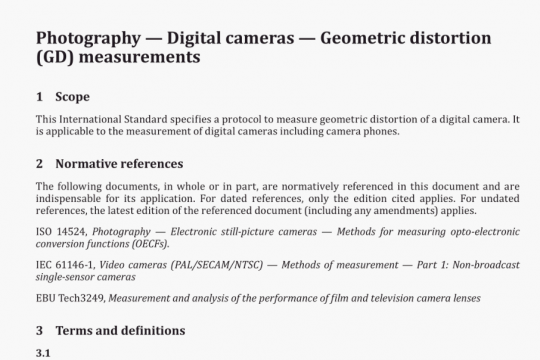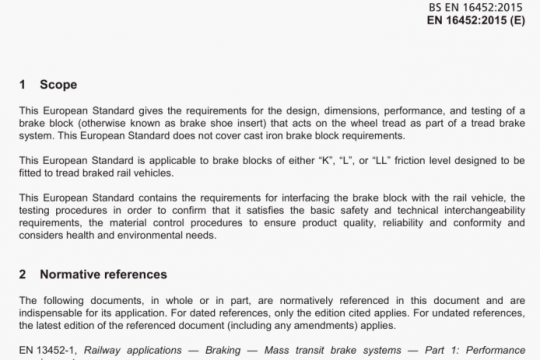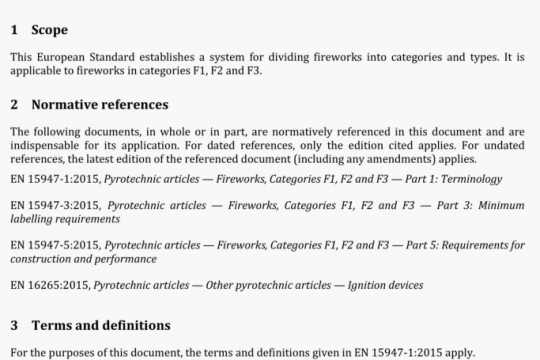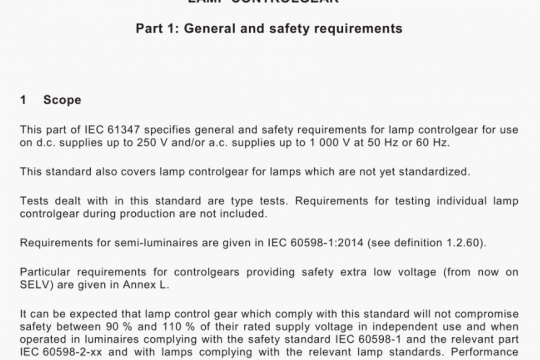BS EN 62676-1-1:2014 pdf free
BS EN 62676-1-1:2014 pdf free.Video surveillance systems for use in security applications Part 1-1: System requirements一 General.
The purpose of image capture is to generate and deliver an image of the real world in a format that can be used by the rest of the VSS.
The purpose of image capturing is to generate an image of the scene for later processing by the VSS. An image source captures an image of the scene. creates image data and delivers that data to the image handling functionality using the system interconnections. The image data can be in analogue (e.g. composite video) or digital (e.g. JPEG, MPEG-4) format.
4.2.3 Interconnections
Interconnections describe all transmission of data within the video environment. This includes two functions: connections and communications
The communications describe all video and control data signals, which are exchanged between system components. These signals may be analogue or digital.
Connections cover the media used for the communication signals. Examples of connections are cables (e.g. twisted pair, coaxial or optical fibre), digital networks, wireless transmission as well as equipment e.g. a multiplexer or video matrix.
A VSS can be divided into components that are communicating through interconnections, which are not dedicated to the VSS. An example is a network which is shared with other applications.
4.2.4 Image handling
4.2.4.1 General
The functions of image handling include analysis, storage and presentation of an image or a sequence of images. The same functions can also be applied to other data (e.g. audio stream) and meta data. A VSS does not necessarily contain all of these functions.
Image handling can be performed by one or several devices that make up the VSS (e.g. monitors, recorders, image analysers, intelligent cameras and remote workstations). One device can also handle several image handling tasks (e.g. digital video recorder).
During image handling the images may be changed e.g. in resolution, image rate and compression.
4.2.4.2 Analysis
The video data that makes up the images can be analysed in order to extract information from live or recorded video data. In addition to the video data the analysis function can also use other data (e.g. audio stream) or meta data as inputs.
Analysis can be utilized for several purposes:
• proving the integrity of the system (e.g. camera position);
• interpreting the captured scene (e.g. automatic number plate recognition);
• detecting an event which may trigger an alarm (e.g. moving person or smoke detection).
4.2.4.3 Storage
The video image data (as well as other data or meta data) can be stored on a storage medium (e.g. magnetic, optical, electronic) for later retrieval. The first manifestation of an image in persistent and final form is called ‘original image data’ or ‘original recording’. The stored data can be in analogue or digital format. Precise copies may be made of digital data and called ‘original’. The transfer of images from the original recording and location to another media is called ‘image backup’ or ‘master copy’ in case of an exact copy or otherwise if altered ‘export’. Exported images may be used as working copy due to necessary compression or format conversions, image enhancements or similar processing.
4.2.4.4 Presentation of information
Presentation of information is the display of video images either as single (still) images or as video sequences consisting of consecutive video images in visible form that can be viewed by an operator. One or several video images may be displayed simultaneously. Additionally, other data (e.g. audio stream) and meta data can be presented.
Examples of devices for presenting information include monitor screens (e.g. CRT. plasma, LCD) or projectors.
4.3 System management
4.3.1 General
The user interface is a very important interface for activity and data management within VSSs. This interface significantly determines comfort, functionality and the actual security of a VSS.BS EN 62676-1-1 pdf download.




